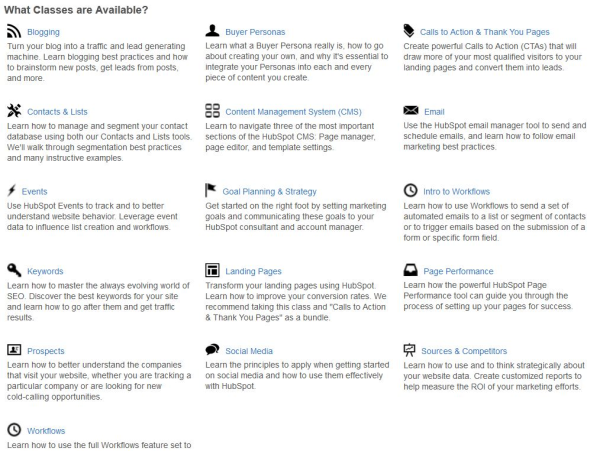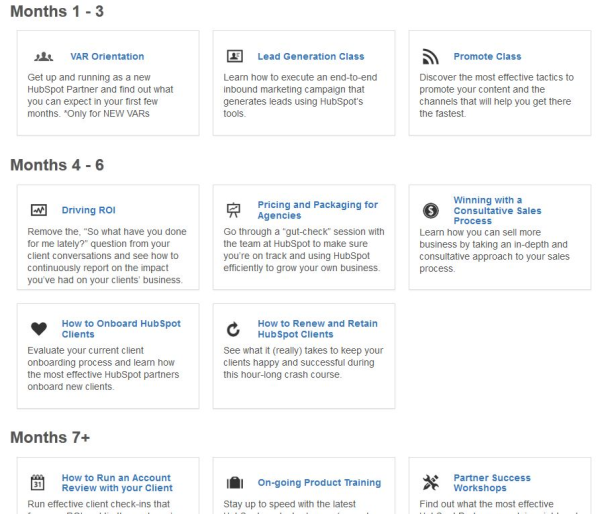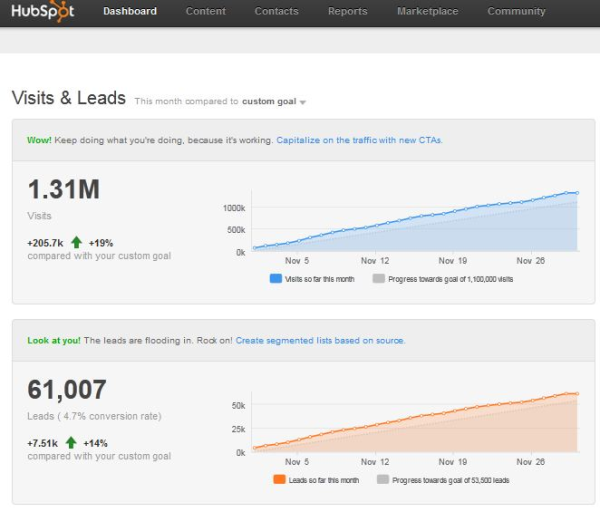It's a shame how many people aren't constantly learning new skills, letting their competitive advantage slip away. It's also unfortunate how many companies don't have a system in place for helping their employees learn new skills.
I was reading some old articles of mine and ran into this old story:
I received a call from a gentleman the other day whose first words were, "I received a Website Grader report from my client that you sent him and instead of reading your site for an hour to try to figure it out, I figured I'd just call and talk to a human. Can you tell me what you do?" He also told me he was an SEO consultant, so I suggested he just go to Website Grader to read the report. He then insisted on me telling him what we did. So, I explained how our software helped people attract more traffic, convert more traffic into leads and leads into sales, and then measure and analyze each step of the process to enable continuous improvement. After I asked him a few questions about what software he used, which turned out to be nothing besides some SEO tools, I told him how our software helped agencies more efficiently deliver value by providing an integrated suite of tools that talked to each other. Then, at his prompting, I explained what the different tools did. He cut me off in the middle of that and said, "I guess I'm just going to have to read your site. I'm sick of all of you companies making me read your sites to figure out what you do."
It was fairly obvious to me after this conversation, that this guy was mad that a) his client was questioning whether he was doing a good enough job, b) that other companies have different (and possibly better) ways of doing things and c) that he had to learn something new.
What are you doing to prevent your agency from getting this far behind? Do you require that your employees continuously learn and experiment? Are you pulling your clients into the state of the art of marketing -- or are they pushing you to do basic research?
This guy obviously missed the memo that learning doesn't stop after formal education.
This past Friday as part of my weekly webinar for marketing agencies, I invited Mark Kilens (HubSpot's Manager of Customer Training) to come and get some feedback about some top-secret new stuff he's working on.
We also reviewed all of the training available to our customers and partners. Mark formed his team in the not too distant past and has made some amazing strides in training a big swath of our customer base. Mark's team delivers every one of the small group classes below every week, usually more than once.

We've also invested a lot in our agency training. Kate Walsh, HubSpot Services Director, and her team run agency classes every week.

Both the customer and partner training are live classes. There's tons more training available that is recorded and written.
At HubSpot, we're committed to creating software AND training that helps marketers transform their marketing. This wouldn't be possible unless our employees were constantly learning. We are able to provide so much training because our team is constantly experimenting and learning. We have a culture where we reward employees who take the initiative to learn something new on their own. We encourage people to experiment and report results, whether the experiment succeeded or failed, so that we're all learning. We also hold employees accountable to learning skills that they need to master their job; even our top employees are required to continously be learning and improving skills.
Our best agency partners share this cultural trait in common with us. At PR 20/20, I know that the employees spend 3 hours per week taking some class, writing up what they've learned and sharing it with the team on their internal social network. I met a new IMPACT employee this week that told me, "Pete Caputa is required reading at IMPACT."
What does your company do to ensure that your team is constantly learning?



 I recently finished reading a 2-part blog post by Mary Planding, owner of
I recently finished reading a 2-part blog post by Mary Planding, owner of  What do golf legend Jack Nicklaus, basketball great Michael Jordan and decorated Olympian Michael Phelps all have in common? They have all embraced
What do golf legend Jack Nicklaus, basketball great Michael Jordan and decorated Olympian Michael Phelps all have in common? They have all embraced  Let's be honest. Using HubSpot and practicing inbound marketing isn't the easy solution. It takes practice, it takes training and it takes hard work. It's alot easier to buy some ads, cross our fingers and hope the phone rings. But we know that's not the right advice for our clients.
Let's be honest. Using HubSpot and practicing inbound marketing isn't the easy solution. It takes practice, it takes training and it takes hard work. It's alot easier to buy some ads, cross our fingers and hope the phone rings. But we know that's not the right advice for our clients.